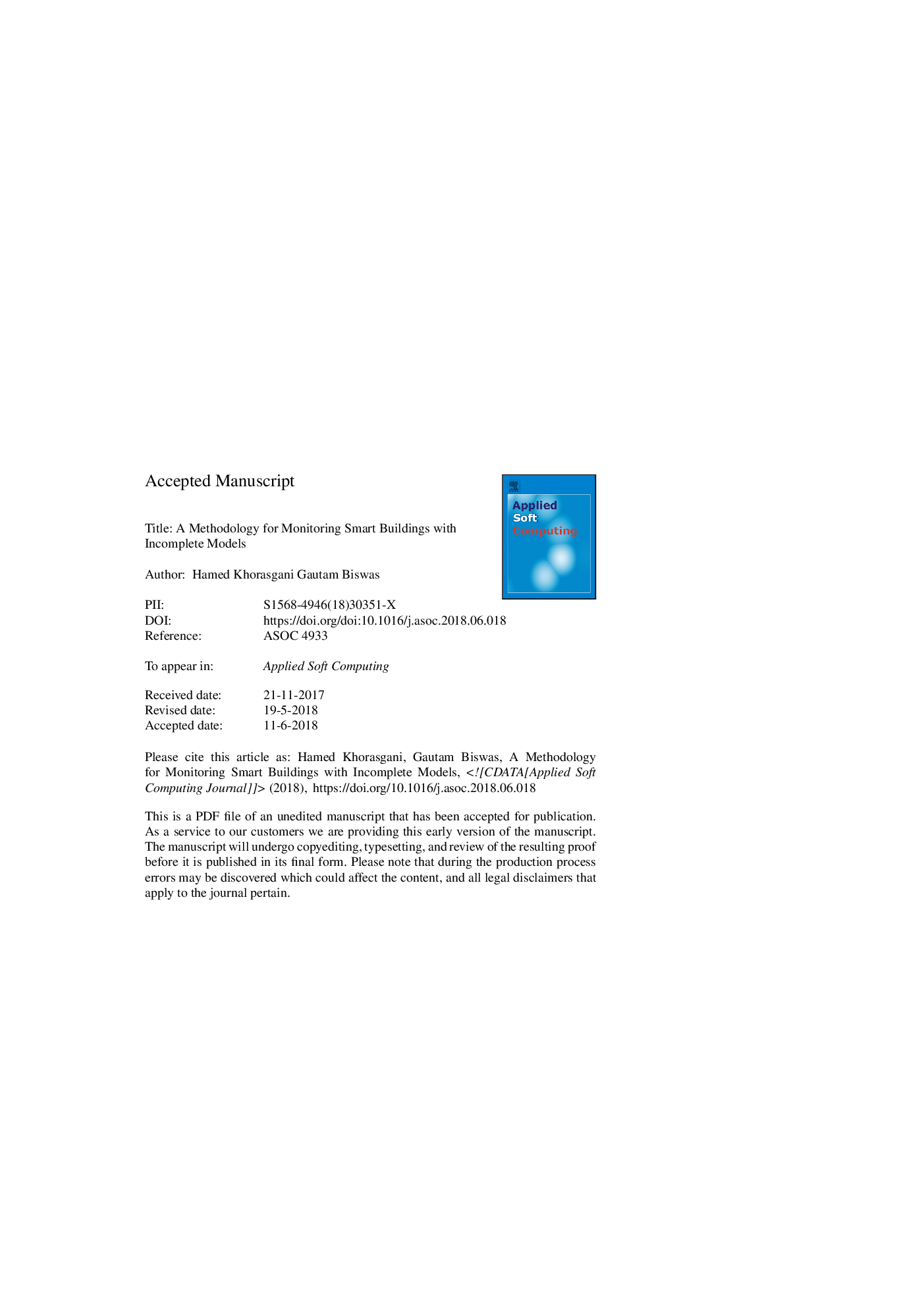| Article ID | Journal | Published Year | Pages | File Type |
|---|---|---|---|---|
| 6903278 | Applied Soft Computing | 2018 | 35 Pages |
Abstract
This paper combines a residual-based diagnosis approach and an unsupervised anomaly detection method for monitoring and fault diagnosis in smart buildings. Typically buildings are very complex, and it is computationally intractable to built accurate diagnosis models for large buildings. However, complete and fairly accurate models can be constructed for components like supply and exhaust fans in buildings. Our proposed method combines a model-based diagnosis approach that uses available models and a data driven approach that uses machine learning techniques along with the additional sensor data available from buildings to update a diagnosis reference model and build more complete diagnosis systems for buildings. To estimate the likelihood of each potential fault in the complex systems, the dependencies between components and, therefore, the sensor measurements need to be considered for accurate diagnosis. In this work, we employ the tree augmented naive Bayesian learning algorithm (TAN) to develop classifiers for fault detection and isolation. TAN structures can accommodate some dependencies between the measurements. We demonstrate and validate the proposed approach using a data-set from an outdoor air unit (OAU) system in the Lentz public health center in Nashville.
Keywords
Related Topics
Physical Sciences and Engineering
Computer Science
Computer Science Applications
Authors
Hamed Khorasgani, Gautam Biswas,
